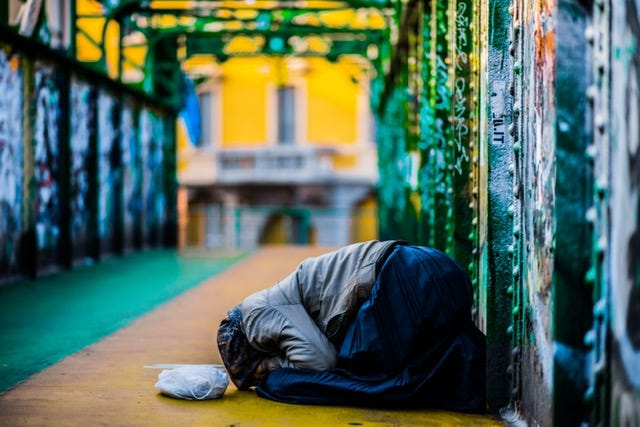Michele Steeb, Author of Behind the RED DOOR: Battling the Homeless Epidemic
“I bristle whenever I hear that jaded term, “The Homeless.” The breadth of people who “become homeless” is just as great as the breadth of people shopping at your local grocery store.”
Throughout her life, Michele Steeb has been a spirited champion for the public good. She has managed and led fundraising for political campaigns, launched two technology companies and had a successful stint as Vice President of Political Affairs for the California Chamber of Commerce.
In 2006, she joined the board of a struggling emergency homeless shelter in Sacramento, California. She later became the Chief Executive Officer transforming it into a comprehensive program serving 270 homeless women and children.
Her biggest milestone — securing $4+M in public and private capital funding for the shelter allowing it to acquire over 50,000 square feet of expanded operating capacity.
In 2012, Michele was appointed by then Governor Jerry Brown to serve on California’s Prison Industry Authority board. She also served on the Policy Board to End Homelessness and on the steering committee that helped launch Sacramento Steps Forward.
Michele is also a highly respected public speaker, has authored and co-authored scores of thought-leadership on homelessness, and has received numerous awards and honors for her work — all with the mission of helping people recognize and embrace their God-given potential.
In 2019, Michele stepped down as CEO of the homeless program and relocated with her family to Lucas, Texas. Filled with perspectives and experiences from her advocacy work, she was led to author, "Answers Behind the RED DOOR: Battling the Homeless Epidemic."
Released in 2020 during the rise of the Covid-19 pandemic, the book offers a sobering inside look at the growing homeless epidemic and its impact on our cities, communities, and future generations.
Asked about what fueled her decision to pursue writing the book, she had this to say:
“Once we made the decision to leave Sacramento which meant leaving Saint John's, I felt compelled to write this book to share what I learned in my 13 years on the ground, including the ineffectiveness of government policy in terms of helping the homeless. At the same time, I wanted to offer some hope by highlighting 11 success stories of people who have risen from the depths of despair to live their full potential.”
She says that David, her co-author who served on the board of the homeless program she led and who has authored several other books, encouraged her to take this step while agreeing to co-author the book.
“Our audience includes policymakers and everyday citizens who are looking around saying, "What in the world happened? Why has homelessness become so prevalent and what can I do about it?"
Throughout the pages, she poses many questions:
“In arguably one of the richest countries in the world, how is this happening? Why? And perhaps more significantly, what can be done to turn it around? The ANSWERS are never easy, but they do exist...once we begin to ask the right QUESTIONS.”
Michelle added this:
“Candidly, I bristle whenever I hear that jaded term, “The Homeless.” The breadth of people who “become homeless” is just as great as the breadth of people shopping at your local grocery store. Paradoxically, this diversity plays into the hands of the government officials who, in their concentrated effort to make a very difficult job easier, treat every person in this category the exact same way. While I much prefer to use the term “those struggling with homelessness,” or “those who become homeless,” it is rather wordy, cumbersome, and tends to become redundant. Therefore, for readability, clarity, and simplicity, I will resort to using that uncomfortable term “The Homeless.”’
Michele says that amid the pandemic there has been a noticeable surge in homelessness in major cities around the nation amid the pandemic. She largely attributes this to ineffective government policy
“I use 'issue demographics' when I talk about the homeless population. 75+% struggle with mental illness and/or addiction. In the case of the women and children we served at SJP, 70% are victims of domestic violence; 65% have criminal histories; 50% don't have a high school diploma or GED; 30% have CPS cases. The homeless struggle with multiple underlying issues-- often called co-occurring disorders-- all of which are ignored undercurrents of homelessness policy.”
She says that for many years women and children have become what she calls the invisible homeless — “their numbers have been increasing dramatically, though, for many years, HUD has falsely claimed family homelessness has been decreasing.”
In terms of solutions, she believes that a more regional approach where counties NOT cities are taking the lead on homelessness is the key.
Her concluding thought on why policy leaders, in particular, should read the book:
“My #1 aim in writing the book was to share my learnings as well as share the hope that with thoughtful policy changes, the crisis can be turned around.”





